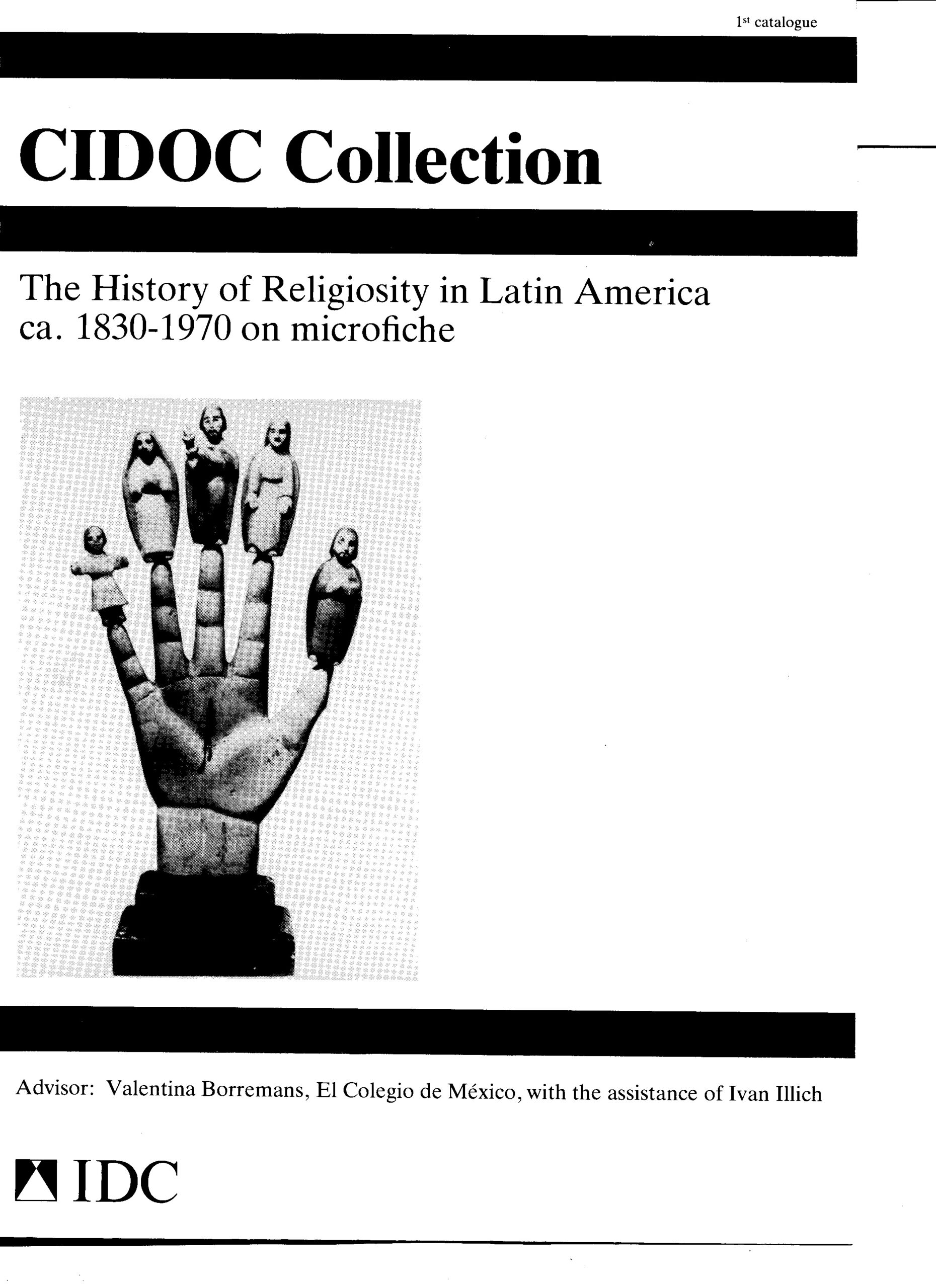CIDOC Microform Documents on Popular Religiosity in Latin America
The CIDOC research microfiche collection contains 3,322 monographs and 576 serials. The collection was created by CIDOC, the Centro Intercultural de Documentación, based in Mexico and was founded by Ivan Ilich.

From the publisher: “The imprints of the nineteenth and twentieth centuries that reflect local devotions and syncretist rituals, religious iconography and poetry, and the pastoral campaigns of the various churches and sects, went uncollected and unnoticed until the early 1960s, when Ivan Illich began to search for them and to collect them in the CIDOC Library of Cuernavaca, Mexico. The filming of a selection of material from this collection has been done in many libraries throughout Mexico, Venezuela, Brazil, Argentina and Chile.”
The PDF format files are searchable and include the detailed holdings of these collections in three different catalogs.
The CIDOC microfilm were created by IDC publishers and is now marketed by Brill.
These libraries own the (very expensive) collection:
- The University of California Library System
- Pennsylvania State University
- Library of Congress
- The University of Wisconsin at Madison.
From the introduction:
Until now, it has been impossible for the sociologist, the anthropologist, the historian of attitudes, or the social psychologist to develop the study of religion in modern Latin America into a field of teaching and research. The documents relevant to the colonial period are, of course, preserved and often well-edited. But the imprints of the nineteenth and twentieth centuries that reflect local devotions and syncretist rituals, religious iconography and poetry, and the pastoral campaigns of the various churches and sects, went uncollected and unnoticed until the early 1960s, when Ivan Illich began to search for them and to collect them in the CIDOC Library of Cuernavaca. Under the care of Valentina Borremans, the collection grew, and is still growing vigorously after having become part of El Colegio de México. A selection of material from this collection is being made available on microfiches, and new materials from archives in Central and South America are being added as they are located and photographed.
“For more than a century, the empirical study of religion in Latin America has been neglected. Religiosity was either treated as an atmospheric element in the institutional history of Church and State or as an aspect of culture. Students of religion felt drawn to the “exotic” religions in the Orient and in Africa; they tried to explain by religion the political behavior of people in Holland or Massachusetts: they reconstructed the pantheon of Aztecs or Huicholes – and exceptionally paid attention to Voodoo or Theologians of Liberation. That which is uniquely Latin and American about religion on this continent has been hidden beneath a veil woven out of concepts that were imported from somewhere else by churchmen and by ethnologists, by politicians and by social critics. What makes the picture of religion on this continent unique has been missed and it is this: in the course of five hundred years several layers of very different Christian varnish were applied on the continent, unifying it, and this same varnish also preserved an elsewhere unknown variety of autochthonous and immigrant mentalities. For this history we need the documents which reflect the actual, local encounters between the Church’s pastoral action and the people’s actual speech and traditional ritual”.
Ivan Illich
“This class of materials has so far been missed by Latin Americanist librarians. Notwithstanding the international efforts to catalogue unregistered imprints of the XIXth and XXth centuries, a high percentage of the items in the CIDOC microfiche collection do not appear in any catalogue in the Americas or in Europe. In 1989 the Colegio de México will publish my catalogue to our collection which will be a guide for the research into this hitherto uncharted bibliographic domain”.
Valentina Borremans